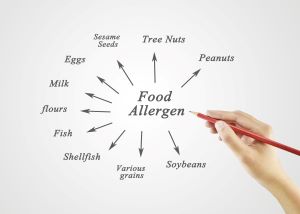In the United States, nine foods account for 90% of food allergies: milk, eggs, peanuts, tree nuts, wheat, soy, fish, crus
Smarty Plants Podcast
 Discover Smarty Plants, the Minnesota Department of Agriculture's podcast that digs into the fascinating world of invasive species. Join expert guests as they share insights and solutions to protect our environment and agricultural resources. Visit Smarty Plants and start listening today.
Discover Smarty Plants, the Minnesota Department of Agriculture's podcast that digs into the fascinating world of invasive species. Join expert guests as they share insights and solutions to protect our environment and agricultural resources. Visit Smarty Plants and start listening today.
Smarty Plants Podcast
 Discover Smarty Plants, the Minnesota Department of Agriculture's podcast that digs into the fascinating world of invasive species. Join expert guests as they share insights and solutions to protect our environment and agricultural resources. Visit Smarty Plants and start listening today.
Discover Smarty Plants, the Minnesota Department of Agriculture's podcast that digs into the fascinating world of invasive species. Join expert guests as they share insights and solutions to protect our environment and agricultural resources. Visit Smarty Plants and start listening today.
The United States Food and Drug Administration (FDA) has identified nine foods (or food ingredients) that are responsible for 90 percent of food allergic reactions. Those foods are milk, eggs, fish, crustacean shellfish, tree nuts, peanuts, wheat, soybeans, and sesame. Under the FASTER Act of 2021, sesame is recognized as the 9th major food allergen effective January 1, 2023.

The United States Food and Drug Administration (FDA) has identified nine foods (or food ingredients) that are responsible for 90 percent of food allergic reactions. Those foods are milk, eggs, fish, crustacean shellfish, tree nuts, peanuts, wheat, soybeans, and sesame. Under the FASTER Act of 2021, sesame is recognized as the 9th major food allergen effective January 1, 2023.

Yes. The leading cause of food recalls in recent years is due to the presence of undeclared allergens. Undeclared allergens end up in food due to two main reasons, mislabeling of the finished product and allergen cross-contact. Mislabeling occurs when a finished product label does not list an allergen in the ingredient statement when, in fact, the product contains an allergen. This can occur due to using the wrong label during packaging or not including allergenic ingredients in the finished product ingredient statement.
Yes. The leading cause of food recalls in recent years is due to the presence of undeclared allergens. Undeclared allergens end up in food due to two main reasons, mislabeling of the finished product and allergen cross-contact. Mislabeling occurs when a finished product label does not list an allergen in the ingredient statement when, in fact, the product contains an allergen. This can occur due to using the wrong label during packaging or not including allergenic ingredients in the finished product ingredient statement.
Allergen cross-contact is when a residue or trace amount of an allergen unintentionally crosses over into a product that doesn’t have that specific allergen. Cross-contact is generally the result of environmental exposure during food processing or handling. It can occur when multiple foods are manufactured on the same processing line, through the misuse of rework, a result of ineffective cleaning or from employee practices.
Allergen cross-contact is when a residue or trace amount of an allergen unintentionally crosses over into a product that doesn’t have that specific allergen. Cross-contact is generally the result of environmental exposure during food processing or handling. It can occur when multiple foods are manufactured on the same processing line, through the misuse of rework, a result of ineffective cleaning or from employee practices.

